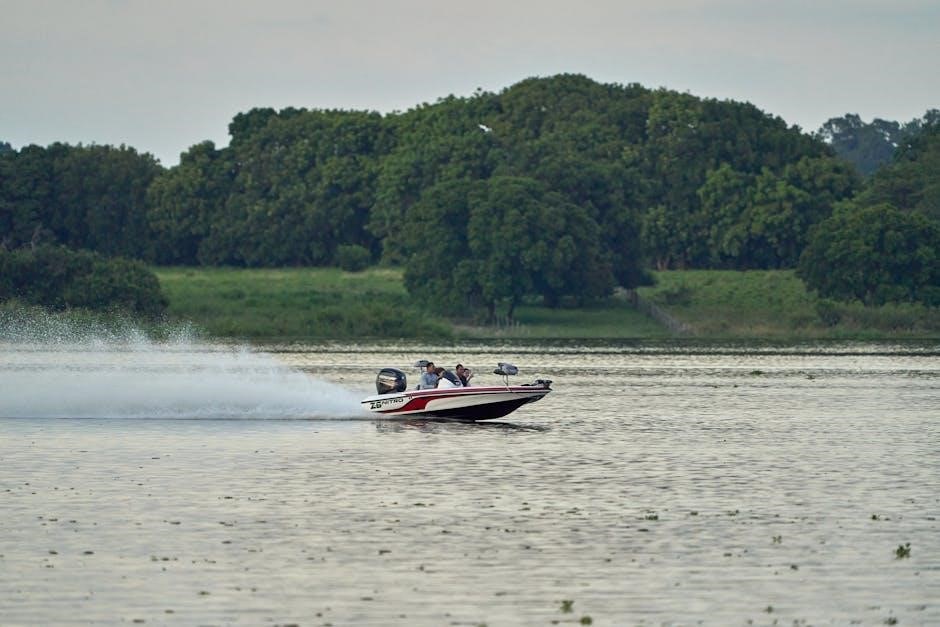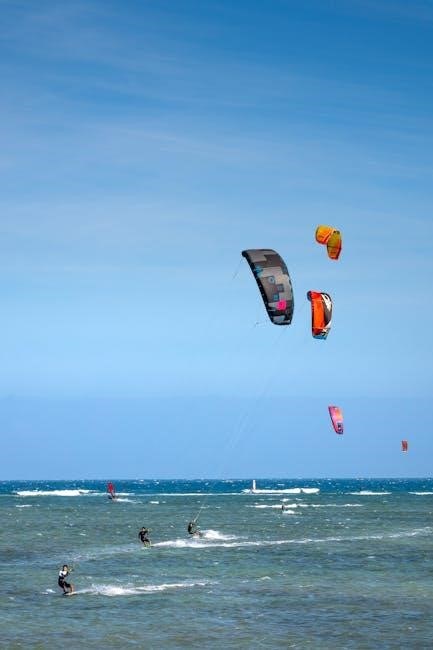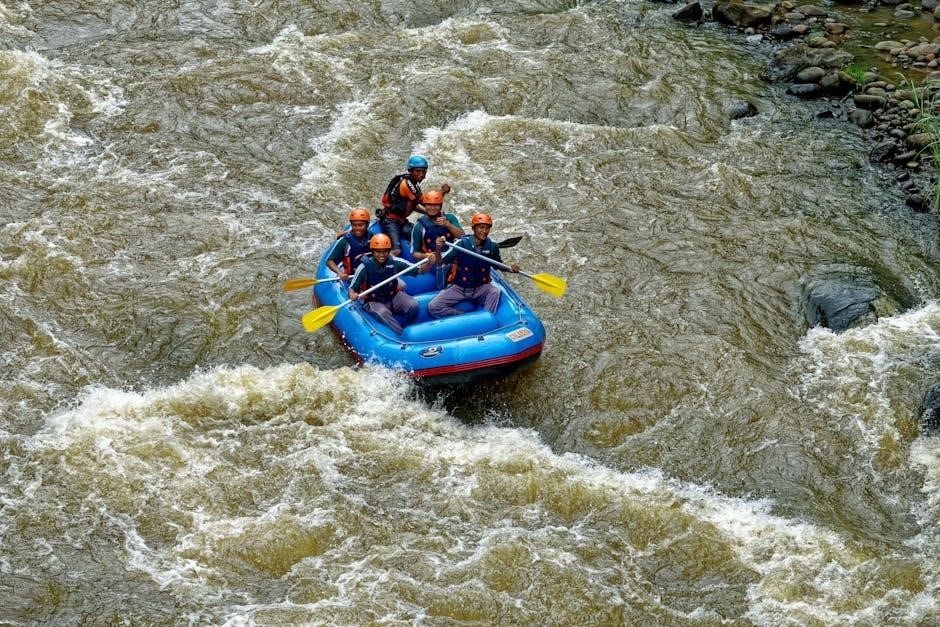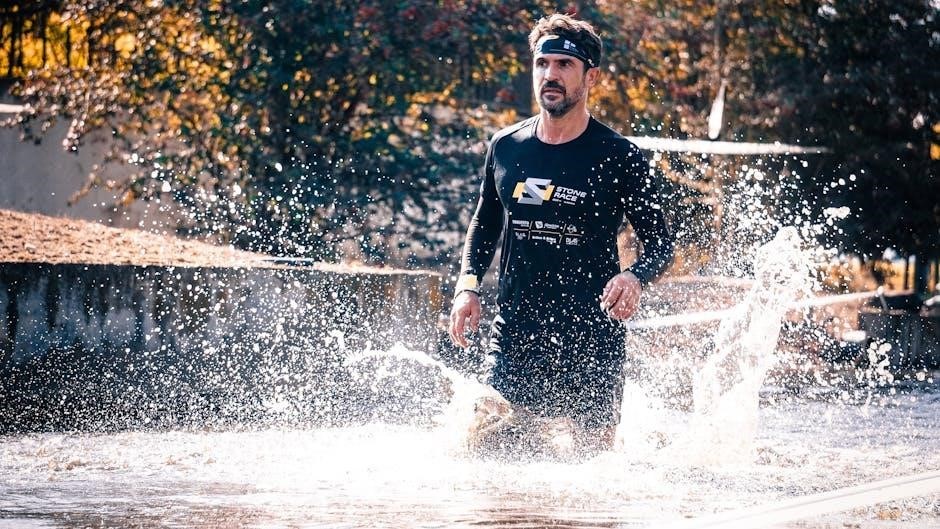Embark on a transformative journey with water fasting‚ a practice of abstaining from everything except water. This comprehensive guide explores its rich history‚ potential benefits like weight loss and cellular health‚ and crucial safety measures. Discover preparation tips‚ step-by-step instructions‚ and refeeding strategies to safely and effectively navigate this practice.
What is Water Fasting?
Water fasting‚ in its simplest form‚ involves consuming nothing but water for a specified period‚ typically ranging from 24 to 72 hours. This practice abstains from all other food and beverages‚ including coffee‚ tea‚ and even diet soda. Some individuals undertake longer water fasts‚ extending up to 30 days‚ often under medical supervision. The primary goal is to induce profound physiological changes‚ such as weight loss‚ cellular repair‚ and metabolic enhancement.

Preparing for a water fast is crucial‚ involving dietary adjustments and mental preparation. It is essential to consult a healthcare professional before embarking on a water fast‚ especially if you have underlying health conditions. During the fast‚ staying hydrated is paramount‚ with recommendations ranging from 9 to 13 cups of water daily.
Breaking the fast requires careful reintroduction of food‚ starting with small‚ easily digestible portions. This process helps prevent refeeding syndrome‚ a potentially dangerous condition. The duration of refeeding should ideally match the length of the fast. Water fasting can be a powerful tool‚ but it demands responsible planning and execution.
Historical and Cultural Context of Water Fasting
Water fasting boasts a rich tapestry of historical and cultural significance‚ interwoven with religious practices‚ detoxification beliefs‚ and health-seeking behaviors across millennia. Fasting‚ in general‚ holds deep roots in various religions‚ including Christianity. St. Catherine of Siena‚ an early historical figure‚ practiced extreme starvation‚ restricting her diet to only water and vegetables. This represented one of the earliest documented forms of self-imposed dietary restriction.
Throughout history‚ cultures have employed water fasting for spiritual purification‚ seeking enlightenment‚ and demonstrating devotion. The practice appears in various forms across diverse societies‚ each adapting it to their unique beliefs and customs.
In modern times‚ water fasting has gained traction as a health and wellness trend‚ fueled by claims of weight loss‚ detoxification‚ and improved cellular function. This resurgence blends ancient traditions with contemporary scientific inquiry‚ attracting individuals seeking natural approaches to health optimization. However‚ understanding the historical context is crucial for appreciating the multifaceted nature of water fasting and its potential implications.
Potential Benefits of Water Fasting
Water fasting is claimed to offer several potential health benefits‚ although it’s crucial to acknowledge that research is ongoing‚ and many claims require further scientific validation. One of the most cited benefits is weight loss. By restricting calorie intake to zero‚ the body is forced to utilize stored energy‚ leading to a reduction in body weight.
Another potential benefit lies in cellular health. Some proponents suggest that water fasting may promote autophagy‚ a cellular process that removes damaged cells and regenerates new ones. This process could potentially contribute to overall health and longevity.
Furthermore‚ water fasting is touted for its potential to improve metabolic health. Some studies suggest it may enhance insulin sensitivity and reduce blood sugar levels. Additionally‚ some individuals use water fasting as a digestive break‚ allowing the digestive system to rest and repair.
It’s vital to approach these potential benefits with caution. Water fasting is not suitable for everyone‚ and it carries inherent risks that must be carefully considered.
Risks and Safety Precautions
Water fasting‚ while potentially beneficial‚ carries significant risks and necessitates strict adherence to safety precautions. One of the primary concerns is dehydration. While it may seem counterintuitive‚ the body obtains some of its fluid intake from food. Abstaining from food can lead to dehydration if water intake is not carefully monitored and increased.
Electrolyte imbalances are another serious risk. Essential minerals like sodium‚ potassium‚ and magnesium can become depleted during a water fast‚ leading to potentially dangerous complications. Supplementation with electrolytes is often recommended‚ but should only be undertaken under medical supervision.
Refeeding syndrome‚ a potentially fatal condition‚ is a significant risk when breaking a prolonged water fast. The body’s metabolism shifts dramatically during fasting‚ and reintroducing food too quickly can overwhelm the system.

Water fasting is not suitable for everyone. Individuals with underlying medical conditions such as diabetes‚ kidney disease‚ eating disorders‚ or those who are pregnant or breastfeeding should never undertake a water fast without explicit medical clearance. Consulting a healthcare professional is imperative before initiating a water fast.
Preparing for a Water Fast
Proper preparation is paramount for a safe and successful water fast. Begin by consulting your healthcare provider‚ especially if you have any underlying health conditions. A gradual dietary transition is crucial in the days leading up to the fast. Reduce your intake of processed foods‚ sugars‚ and caffeine‚ which can exacerbate hunger and withdrawal symptoms.
Focus on consuming whole‚ nutrient-dense foods like fruits‚ vegetables‚ and healthy fats. This helps stabilize blood sugar levels and reduces cravings during the fast. Some practitioners recommend incorporating intermittent fasting in the days before a water fast‚ gradually increasing the fasting window to acclimate your body to periods without food.
Hydration is key. Ensure you are adequately hydrated in the days leading up to the fast by drinking plenty of water. Mental preparation is equally important. Understand the potential challenges of water fasting‚ such as hunger‚ fatigue‚ and irritability.
Plan your fasting schedule and identify strategies for managing these challenges. It’s also beneficial to prepare your environment by removing tempting foods and creating a relaxing space to rest during the fast.
How to Do a Water Fast: A Step-by-Step Guide
Embarking on a water fast requires careful planning and execution. Here’s a step-by-step guide to help you through the process:
Step 1: Preparation. As mentioned earlier‚ gradually transition your diet in the days leading up to the fast. Ensure you are well-hydrated and mentally prepared.
Step 2: The Fasting Period. During the water fast‚ consume only water. The recommended amount is typically 9-13 cups per day‚ but adjust based on your individual needs and thirst levels. Spread your water intake throughout the day.
Step 3: Monitoring. Pay close attention to your body’s signals. If you experience severe discomfort‚ dizziness‚ or other concerning symptoms‚ discontinue the fast immediately.
Step 4: Rest. Prioritize rest and relaxation during the fast. Avoid strenuous activities and stressful situations.

Step 5: Duration. For beginners‚ a 24-72 hour water fast is generally recommended. Avoid fasting for longer durations without medical supervision.
Step 6: Breaking the Fast. The refeeding process is crucial. Start with small‚ easily digestible foods. Avoid overeating and gradually reintroduce different food groups.
Remember‚ consulting with a healthcare professional before starting a water fast is essential.
What to Drink (and Not Drink) During a Water Fast
During a water fast‚ the primary focus is on consuming only water. However‚ there’s some debate about what else is permissible. The purist approach dictates sticking solely to water for the entire duration‚ especially if the fast is for medical reasons.
For those fasting for general health‚ digestive rest‚ or weight loss‚ some argue that liquids under 20 calories won’t break the fast. These might include herbal teas without additives‚ or very diluted lemon water. However‚ these options remain controversial.
What to Avoid:

Strictly avoid beverages containing calories‚ sugars‚ or artificial sweeteners. This includes:
- Coffee and tea (unless plain and herbal)
- Diet soda
- Juices
- Alcohol
- Bone broth (if aiming for autophagy)
- Apple cider vinegar (if seeking digestive rest)
The key is to minimize any substance that could stimulate digestion or interfere with the body’s natural cleansing processes. When in doubt‚ stick to plain water. Listen to your body and consider the specific goals of your fast when making decisions about what to drink.
Exercise During a Water Fast
Exercising during a water fast requires careful consideration and moderation. While complete rest isn’t always necessary‚ it’s crucial to adjust your routine based on your energy levels and how your body responds.
Avoid strenuous activities‚ especially anaerobic exercises like long-distance running‚ as they can deplete energy reserves and lead to muscle breakdown.
Instead‚ focus on light to moderate-intensity exercises that promote circulation and flexibility‚ such as:
- Yoga
- Walking
- Light stretching
- Resistance training (with light weights)
The goal is to support your body’s detoxification processes without overexerting yourself. Resistance training can be beneficial as it helps maintain muscle mass‚ especially given the elevated human growth hormone levels during fasting.
Listen to your body and stop immediately if you experience dizziness‚ fatigue‚ or nausea. It’s generally recommended to reduce the intensity and duration of your workouts significantly during a water fast. Prioritize rest and recovery to allow your body to focus on cleansing and healing. Always consult with your doctor before starting any exercise program during a fast.
Breaking the Fast: Refeeding Safely
Breaking a water fast is just as crucial as the fast itself‚ demanding a gentle and strategic approach. Your body‚ now sensitive‚ needs nourishment without overwhelming the digestive system. The first meal should be small‚ easily digestible‚ and nutrient-rich‚ no larger than your fist or 500 calories. Avoid binging‚ as your stomach has shrunk and digestion has slowed‚ potentially causing discomfort or illness.
The refeeding process depends on the fast’s duration. While a 16-hour fast requires less caution‚ a 72-hour fast demands extra care to prevent refeeding syndrome‚ a potentially fatal condition. Refeeding should ideally take twice the fasting period.
Focus on light‚ healthy options like nuts‚ salads with olive oil‚ avocado‚ miso soup‚ bone broth‚ or fish broth. Probiotic and prebiotic foods can replenish beneficial gut bacteria.
Avoid processed foods‚ sugary drinks‚ and large portions. Introduce foods gradually‚ monitoring your body’s response. Prioritize hydration and electrolyte balance. This cautious approach ensures a smooth transition back to regular eating‚ maximizing the benefits of the fast while minimizing potential risks. Always consult with a healthcare professional for personalized guidance.
Sample Refeeding Schedules for Different Fasting Durations
Creating a structured refeeding schedule is vital for safely transitioning back to regular eating after a water fast. The duration and intensity of the refeeding process should correlate with the length of the fast.
For a 2-day (36-48 hour) water fast‚ begin with easily digestible foods like bone broth‚ avocado‚ or a small portion of cooked vegetables. Gradually introduce more substantial meals over the next 24-48 hours‚ focusing on whole‚ unprocessed foods.
Following a 3-day water fast‚ a more cautious approach is necessary. Start with clear broths and diluted fruit juices on day one. On day two‚ introduce soft‚ cooked vegetables and small portions of easily digestible protein like eggs or fish. By day three‚ you can gradually return to a normal diet‚ but continue to prioritize whole‚ unprocessed foods and avoid overeating.
Remember to listen to your body and adjust the schedule as needed. Stay hydrated and monitor for any signs of digestive distress. Consulting with a healthcare professional or registered dietitian is recommended to personalize your refeeding schedule and ensure a safe and successful transition.
Supplements and Minerals During and After a Water Fast
Maintaining electrolyte balance is crucial during and after a water fast; As you’re only consuming water‚ your body can become depleted of essential minerals like sodium‚ potassium‚ and magnesium. Supplementation can help mitigate these deficiencies and support overall well-being.
During the fast‚ consider adding a small amount of high-quality sea salt to your water to replenish sodium levels. Magnesium and potassium can be supplemented through electrolyte powders or mineral-rich water. However‚ it’s essential to monitor your body’s response and adjust dosages as needed.
After breaking the fast‚ continue to prioritize nutrient-dense foods and consider incorporating a multivitamin and mineral supplement to support the repletion of essential nutrients. Probiotic and prebiotic foods can also be beneficial to repopulate the gut biome.
Always consult with a healthcare professional or registered dietitian before starting any supplementation regimen‚ especially during or after a water fast. They can help you determine the appropriate dosages and ensure that the supplements are safe and effective for your individual needs.

